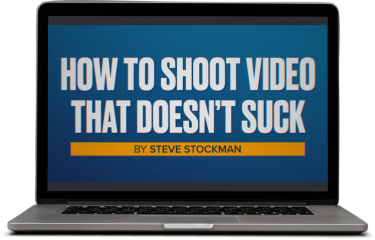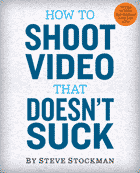
William Goldman (Butch Cassidy and the Sundance Kid, The Sting, Princess Bride) wrote in his classic book Adventures in the Screen Trade that “screenplays are structure.” Because Goldman is a writing god, people listened.
They listened, but they may not have heard well. Goldman was saying that structure was necessary to a screenplay, but he wasn’t saying it was sufficient. Yet many took Goldman’s point, misunderstood, and ran with it, pitching structure-first as the key to writing film. Luckily, it mostly worked anyway, because most film beginners– and many professionals– fail to focus on a hero and a clear beginning, middle and end.
But here’s what Goldman never meant: He did not mean that simple, formulaic adherence to story structure rules was the ultimate endpoint to the art of film. He did not mean that movies should be about their structure.
But that’s where we’ve come to with most American franchise films. A story structure you can set your watch to. Reluctant, flawed hero is forced in act 1 to– at the 20 minute mark– take up arms; for the next 60 minutes to fight the villain and fail at the end of act 2; and in act 3 spend 30 minutes blowing up a boatload of buildings and saving the world. These films don’t just round the story bases, they stop on each one and have a picnic.
Making a movie about its own story structure has some advantages. You can tell where you are if you tune in in the middle. You can see the plot “twists” coming for minutes, so you feel smart. It’s safer financially too, since simple stories sell better in other languages. It’s a win/win for everyone. Kind of. Because it’s also insanely boring.
The most artfully made superhero movies, like Marvel’s enjoyable Dr. Strange, combat boredom by hiding their rote story beats under millions of dollars in great acting, great joke-writing and beautifully crafted special effects. Yes, they blow up the world in act 3, but the “how” is smart and fun to watch (and in this case, backwards). But underneath the exciting ride, Dr. Strange is still traditionally structure-forward. Every question is nailed down, resolved and put away until the sequel. There’s not much of it still in your brain when you leave the theater.
This brings us to the lesson of Arrival, a brilliant new sci-fi film starring Amy Adams, directed by Denis Villeneuve and based on a Ted Chiang short story. Arrival isn’t about its structure. Instead, the structure serves the filmmaker’s inquiry, holding up what it’s really about: ideas. The film lightly touches the bases as it heads toward home instead of stomping on them. It even screws with its own structure, re-ordering it and playing on your franchise-film expectations to create tension and surprise.
Story structure 101 would say that Arrival is about a professor of linguistics (the hero) who is called in to translate for visiting aliens (beginning). Traitors at the top-secret military base and a potential mis-translation of the alien’s language (middle) threaten to cause the humans on earth to attack the aliens, and each other (end.) Each of those beats shows up on screen, and in a normal studio movie, that’s all that would. Big battles, ratcheted up tension. But Arrival isn’t about its structure.
Overlaid on this basic structure is the story of a woman who raises a daughter with a fatal disease.
Overlaid on that is the story of a woman learning a new language even though its screwing with her brain.
Overlaid on that is the story of a woman confronting the military.
Overlaid on that is the story of a relationship between a man and a woman who meet, have a child, and then split up.
Overlaid on that is the story of aliens teaching humans that time doesn’t really work the way they think it does.
Story on story on story, beautifully interwoven in a screenplay by Eric Heisserer. The stories connect and cross, each with its own clear structure. Some take place in flashes from another time and place, so they’re not in order. In some, the director blows by the story beat so subtly you wonder if you missed it. But you didn’t: he takes a tired “ticking time bomb” beat and, to great effect, practically ignores it. In a normal studio film it would be a 15 minute setpiece with accelerating editing and tense military music. You won’t find any of that here. But the result of all this sure-footed interweaving of story is that we feel secure. The film takes us on a journey. Supported, we willingly go along, even if we don’t understand all of it. The not-knowing is called intrigue. It pulls us in, and makes us wonder.
What it makes us wonder about are three important questions: First, scientists tell us that when you learn another language, your brain restructures itself to think differently. What happens if you learn a non-human language? Two: What if physicists are right, and time doesn’t flow the way we think it does? And three: Is a life worth living if you know how its going to end?
These are important questions. We care during the film, and we care afterward. The questions hold us in our seats, and give us something to think and talk about after the film. Making a movie about it’s own structure is reductive, boring, and closes the door on a deeper interaction with the film. A movie that asks questions about our world is magic.
In an era where intrigue is the currency of modern entertainment, which should you do with your videos? The answer depends on how ambitious you are. First, be good at basic structure. Please. But once you are, use it to raise important questions. And remember there’s nothing more intriguing than an inquiry into what it really means to be human.
As you might suspect, I think you should go out and see Arrival. Like, now. Then comment below, or tweet your thoughts @stevestockman.

Get a free preview of the new video course!
Sample two lessons from our new video course free right now. No signup or credit card required!






 Steve Stockman is a writer/ producer/ director in Los Angeles. How to Shoot Video That Doesn't Suck, available in 9 languages, is the best selling video how-to book in the world. You can find the updated (2017) edition from Workman Publishing wherever you get books, ebooks or audiobooks.
Steve Stockman is a writer/ producer/ director in Los Angeles. How to Shoot Video That Doesn't Suck, available in 9 languages, is the best selling video how-to book in the world. You can find the updated (2017) edition from Workman Publishing wherever you get books, ebooks or audiobooks. 
Agreed!
I agree with your sentiments about the arrival. I call this layered writing and the key to telling a great story with great characters.
Never heard of it or of Dr. Strange and was startled to see them playing within a mile of my house. Thanks for the insights and review–I'm on my way!